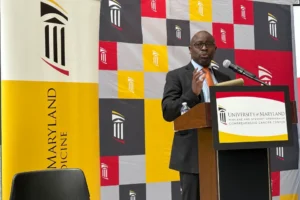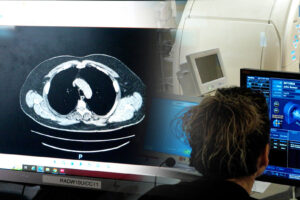How Harpoon Medical’s exit can produce returns for Baltimore
Published 12/18/17 on Technical.ly Baltimore
Abell Foundation says money from the the acquisition will go toward its grant-making budget for community efforts. It illustrates why the foundation invests in medtech startups.
A startup’s exit can produce many ripple effects that help a tech community.
Right after it was announced, the acquisition of Harpoon Medical by Edwards Lifesciences showed how such a deal can create visibility.
The deal brings a big company to Baltimore, as California-based Edwards will maintain Harpoon’s offices inside the Camden Yards warehouse. And there’s added reach for the University of Maryland Baltimore, as the deal capped off a string of three exits this year for companies that spun out of research on the west side of downtown (Analytical Informatics and Living Pharmawere the other two).
Harpoon CEO Bill Niland also talked about a desire to help other companies, showing the potential for one exit to spread business know-how to fuel another.
Of course, there’s also money involved. Along with helping the founders, the returns have an added impact when the investors are local.
After securing an option in 2015, Edwards agreed to acquire the medical device startup for $100 million. The payout has the potential to rise to as much as $250 million if certain milestones are met in the development of Harpoon’s device that allows for the open heart surgery procedure known as mitral valve repair to be performed while the heart is still beating.
Indications from investors have been positive, and one Baltimore-based investor offered a look at the numbers on Monday. In a press release, The Abell Foundation said that the recently-closed acquisition deal produced a 10x return, which happens to be the desired target for many venture investors. The foundation invested $500,000 into Harpoon Medical in 2014-15. When the deal closed, Abell earned $5.2 million, according to the Foundation. Again, with royalties, there is potential for that sum to grow.
While unique in focusing on the city, the Abell Foundation in some ways does familiar foundation work of providing grants to community orgs addressing an array of areas like education, criminal justice and environment, as well as producing reports on challenges the city is facing. But the foundation also sees funding medical startups as part of impact investment work to “help mankind,” as Abell Foundation Robert Embry has put it, and create jobs in the city. These impact investments can also help create another funding stream.
“Investing a portion of our assets directly into Baltimore-based companies will not only grow companies and jobs in Baltimore, but will contribute to our Foundation’s ability to invest in Baltimore and its people,” Embry said in a statement. “The money we earn through our investments allows us to increase our grant-making budget and increase our support of Baltimore businesses.”
Abell isn’t the only investor in the deal with local returns. Harpoon’s slate of investors was Maryland-centered. Before Edwards got involved, the early-stage backers included Bethesda-based venture firm Epidarex Capital, as well as state-backed funders including the Maryland Venture Fund, TEDCO, UM Ventures and the InvestMaryland Challenge. While those groups may not put the money directly into grants for the community, their focus on the state indicates those returns could go toward helping other local companies.
While a recent report on Baltimore’s funding climate showed that lots of venture investment still originates outside the area, this is one case where many from inside will benefit. Investments in startups don’t always pay off, but Harpoon illustrates what the model can look like.



